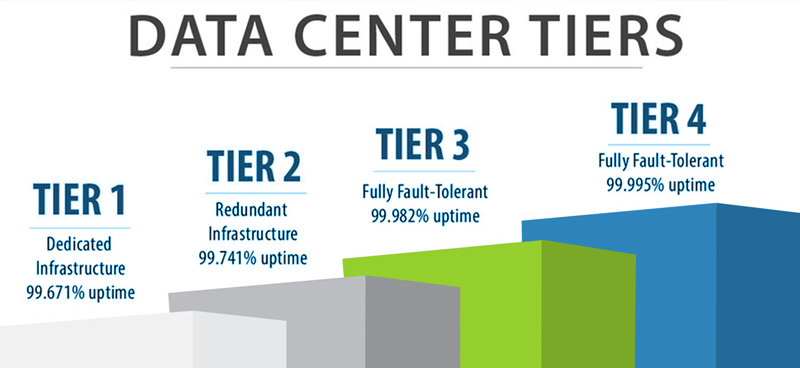
Data centers can be classified into several types based on different criteria such as their design, ownership, usage, or size. Broadly speaking, they are grouped into the following categories:
1. Based on Ownership
- Enterprise Data Centers: These are owned and operated by a single organization for its exclusive use. They are typically designed to support the company’s internal IT operations and often exist on-premises.
- Colocation Data Centers: In these data centers, businesses rent space to host their servers and equipment. The colocation facility provides physical space, power, cooling, and security, but the customer manages their own hardware and software.
- Cloud Data Centers: These are owned and operated by cloud service providers (e.g., AWS, Microsoft Azure, Google Cloud). They host virtualized computing resources that are shared across multiple customers and are typically used for scalable and on-demand cloud computing services.
- Managed Data Centers: These data centers are operated by third-party service providers who manage the entire infrastructure and offer services such as monitoring, backup, and security management, often for businesses that don’t have their own IT staff.
2. Based on Size and Scale
- Small Data Centers: These data centers are smaller in scale and are typically used by smaller businesses. They might be housed in a single room or a small building.
- Medium Data Centers: These have more extensive infrastructure than small data centers, often supporting regional or national operations, and are typically larger but not as large as hyperscale data centers.
- Large (Hyperscale) Data Centers: These are massive data centers used by large organizations (like Amazon, Google, or Facebook) to support cloud services, big data, and large-scale web applications. They are highly scalable and often spread across multiple locations.
3. Based on Functionality
- Traditional Data Centers: These are conventional, physical facilities designed for housing IT equipment like servers, storage, and networking hardware.
- Edge Data Centers: These are small, distributed data centers located closer to the “edge” of the network, i.e., nearer to users or devices. They help reduce latency by providing faster data processing and storage at locations closer to end-users, often used for IoT, gaming, and real-time applications.
- High-Performance Computing (HPC) Data Centers: These are specialized data centers designed to support high-performance computing tasks like scientific simulations, artificial intelligence (AI), and machine learning (ML) workloads. They contain powerful servers and GPUs to handle intensive computational tasks.
4. Based on Tier Levels (Uptime and Reliability)
- Tier I Data Center: The most basic data center with a single path for power and cooling. It has limited redundancy, meaning if there’s a failure, it could lead to downtime.
- Tier II Data Center: These offer some level of redundancy for power and cooling (e.g., backup power), but still rely on a single path for distribution.
- Tier III Data Center: These are designed for higher availability, featuring multiple distribution paths for power and cooling, and redundant systems. Tier III data centers are often used by businesses that require higher uptime.
- Tier IV Data Center: The most resilient, offering fault-tolerant systems with full redundancy for both power and cooling. Tier IV centers can withstand faults or failures without impacting service, making them ideal for critical infrastructure.
5. Based on Deployment Model
- On-Premise Data Centers: Data centers that are built and operated by organizations on their own premises. The organization owns and controls the infrastructure, security, and maintenance.
- Off-Premise Data Centers: These data centers are located outside the organization’s physical premises and are typically used in colocation or cloud computing setups.
- Hybrid Data Centers: These integrate on-premise infrastructure with external data centers, allowing businesses to mix private and public cloud resources. They offer more flexibility and can scale based on business needs.
6. Specialized Data Centers
- Disaster Recovery Data Centers: These data centers are designed for backup and recovery purposes, often storing duplicate copies of data or critical infrastructure to be used in case of an emergency.
- Green Data Centers: Focus on energy efficiency and environmental sustainability, employing renewable energy sources, efficient cooling systems, and eco-friendly practices to minimize their carbon footprint.
- Modular Data Centers: These are pre-fabricated data centers built in modules or containers that can be deployed rapidly and scaled quickly as needed.
Summary Table:
| Type | Description |
|---|---|
| Enterprise Data Centers | Owned and used by a single company. |
| Colocation Data Centers | Shared facility where businesses rent space for IT equipment. |
| Cloud Data Centers | Hosted and managed by cloud service providers (AWS, etc.). |
| Managed Data Centers | Operated by third-party providers with full management services. |
| Small Data Centers | Smaller scale, often used by small businesses. |
| Medium Data Centers | Larger than small, supporting regional or national operations. |
| Hyperscale Data Centers | Large-scale, highly scalable data centers (e.g., AWS, Google). |
| Edge Data Centers | Small, distributed centers near users for low latency. |
| HPC Data Centers | Designed for high-performance computing and AI workloads. |
| Tier I to Tier IV | Based on reliability, ranging from basic to fault-tolerant systems. |
| On-Premise | Data centers located within a company’s own facilities. |
| Off-Premise | Data centers hosted externally (colocation or cloud). |
| Hybrid Data Centers | Combination of on-premise and off-premise infrastructure. |
| Green Data Centers | Focused on sustainability and energy efficiency. |
The choice of data center type depends on an organization’s size, budget, and specific business needs like reliability, scalability, or data sensitivity.